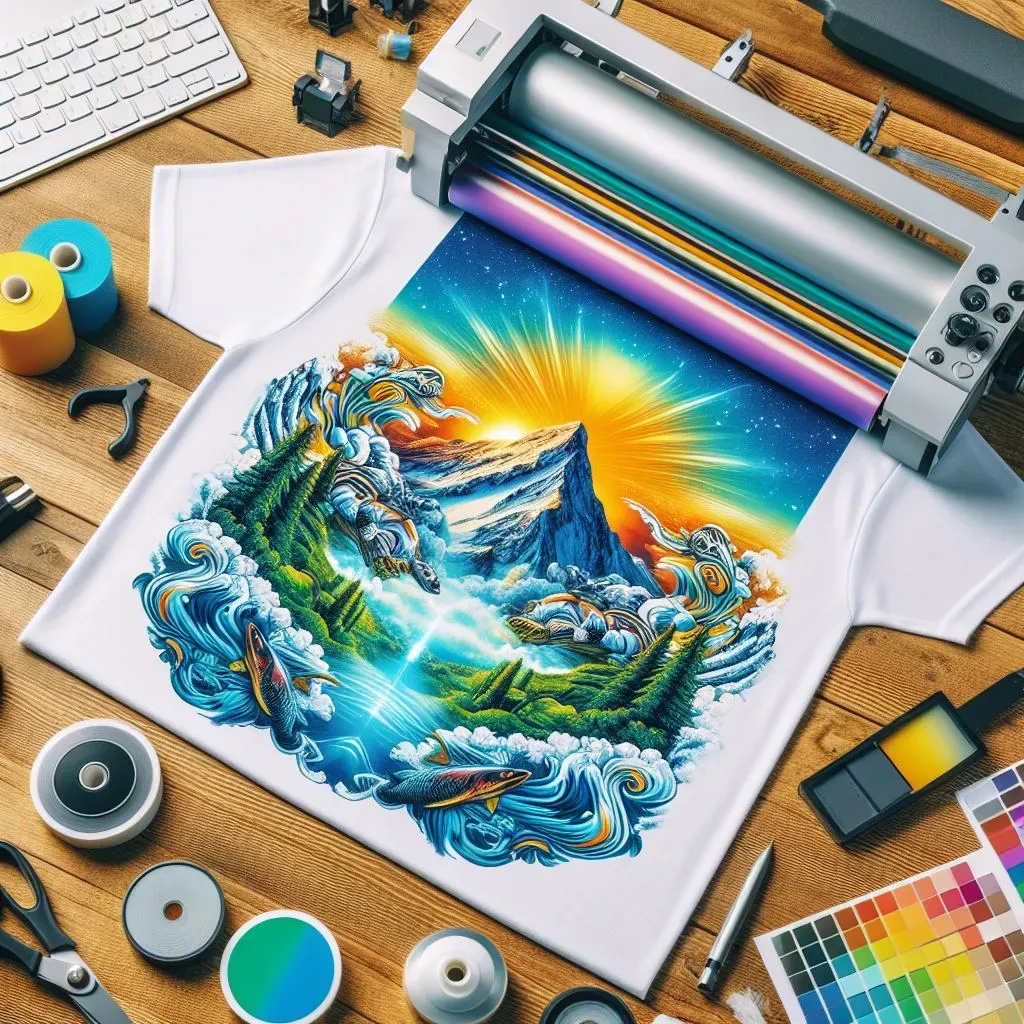When venturing into the world of Direct-to-Film (DTF) printing, it’s crucial to recognize common mistakes in DTF transfers that can jeopardize your print quality. From improper pre-press treatment to incorrect heat settings, these errors can lead to unsatisfactory results, leaving your designs less vibrant and prone to wear. Understanding DTF printing errors is key to achieving high-quality transfers that resonate with your audience. In this guide, we will delve into essential DTF print tips and strategies that help you avoid DTF transfer mistakes, ultimately improving DTF transfers for stunning fabric prints. With a focus on practical solutions, you can elevate your skills and enhance the longevity of your designs.
Direct-to-Film (DTF) printing, sometimes referred to as film transfer printing, has revolutionized custom textile applications, making it possible to infuse intricate designs onto diverse materials. However, many newcomers encounter pitfalls along the way that can compromise the durability and appearance of their prints. By addressing frequent film transfer errors, you can significantly enhance the overall quality and lifespan of your creations. This discussion will illuminate lesser-known insights and actionable strategies to prevent common blunders in film transfers. Whether you are looking to sharpen your methods or simply starting out, appreciating these nuances can foster effective practices and remarkable results.
Understanding DTF Printing Errors and How to Overcome Them
DTF (Direct-to-Film) printing has transformed the textile industry, but like any technology, it is not without its pitfalls. One prevalent issue is the tendency for users to overlook DTF printing errors. Common errors such as inconsistent pigment application or improper curing can result in unsatisfactory designs that do not meet professional standards. It’s crucial for printers to recognize these errors early to prevent them from spiraling into larger issues, which could affect overall print quality.
To overcome these challenges, effective monitoring of the printing process is imperative. Regularly inspecting sample prints can help identify color mismatches or subpar adhesive performance before mass production. Additionally, maintaining good communication with suppliers regarding any technical difficulties can lead to better solutions tailored to specific issues. This proactive approach not only improves DTF transfer quality but also builds confidence in the printing process.
Key Strategies to Improve DTF Transfers
Improving DTF transfers involves several essential strategies that can yield remarkable results. First and foremost, ensuring the use of high-quality inks and transfer films is vital. Quality materials not only enhance the vibrancy of colors but also improve the durability of prints when transferred onto fabric. Furthermore, understanding the correct settings for your specific materials can significantly elevate transfer quality, making it important to conduct thorough research on the best practices for each project.
Another effective strategy is to actively engage in testing different pre-treatment solutions. A well-applied pre-treatment enhances adhesion and ultimately impacts the final print outcome. Regular tests can help find the right combination of treatments that work best with the chosen fabric and ink, thus optimally improving DTF transfers. This focus on quality and compatibility can lead to a more successful and satisfying printing experience.
Essential DTF Print Tips for Consistent Quality
Consistency is paramount in the world of DTF printing, and following essential print tips can help maintain high standards across all projects. One such tip is to standardize your workflow, ensuring that every stage from design to print is meticulously followed. This includes calibrating printers regularly and adhering strictly to the required heat and pressure settings for the heat press. These steps mitigate the chance of errors that can compromise print quality.
Moreover, investing in the right tools such as reliable software for design and alignment can streamline the process further. Software with built-in guides allows for precise placement of artwork, which is critical to avoid misaligned prints. Incorporating these DTF print tips not only enhances the quality of each transfer but also boosts overall productivity, making the printing experience smoother and more efficient.
Avoiding Common DTF Transfer Mistakes
One of the best ways to enhance your printing experience is by being aware of and actively avoiding common DTF transfer mistakes. For example, improper heat settings can ruin an otherwise perfect print. It’s essential to refer to reliable sources for recommended temperature and pressure levels when using a heat press. Consistent adherence to these benchmarks will help ensure you do not fall victim to basic errors that lead to poor transfer outcomes.
Another mistake often made is neglecting the post-press care instructions. Many printers assume their clients understand how to care for their DTF-printed fabrics, resulting in mistakes that could have been easily avoided. Providing clear care instructions can greatly extend the life of the prints and maintain their quality over time. By focusing on educating stakeholders about both pre- and post-press best practices, you can significantly reduce the risk of common DTF transfer mistakes.
Maximizing DTF Transfer Quality Through Testing
To achieve the best possible DTF transfer quality, ongoing testing is essential. This means regularly experimenting with different settings, treatments, and materials until the right combination is discovered. Begin by conducting a series of test prints using various heat settings for layered transfers, as inconsistencies in temperature can lead to varying results. Keeping a log of these tests helps in solidifying a reliable benchmark for future prints.
Alongside testing transfer techniques, evaluating ink and film compatibility is crucial. Variations in inks can significantly affect end results, so it’s wise to try different combinations to find the ideal match. Getting feedback from peers within print communities can provide invaluable insights into testing methods that have worked for others, thereby streamlining the process of improving DTF transfer quality across your projects.
Continual Learning to Avoid DTF Transfer Errors
The field of DTF printing is constantly evolving, and continual learning is essential for avoiding DTF transfer errors. Engaging with online resources like courses, webinars, and relevant blogs will keep you updated on industry advancements and best practices. Networking with established professionals in the field can also offer practical tips that can enhance your printing techniques, helping you stay at the forefront of DTF technology.
Additionally, joining dedicated online communities can provide a platform for collective learning. These forums allow you to share experiences and troubleshoot problems with others who face similar challenges. By fostering an environment of knowledge exchange, you can significantly reduce the occurrence of DTF transfer mistakes, thereby improving the overall quality and satisfaction of your print projects.
Frequently Asked Questions
What are the common mistakes in DTF transfers that affect print quality?
Common mistakes in DTF transfers include improper pre-press treatment, incorrect heat press settings, and using poor quality inks and films. These factors can lead to poor adhesion, faded colors, and overall low DTF transfer quality.
How can I improve DTF transfers and avoid common printing errors?
To improve DTF transfers, ensure proper pre-treatment of the film, use the correct heat press settings, invest in high-quality inks and films, and allow adequate curing time between presses. These practices help enhance DTF transfer quality and minimize mistakes.
What are the best DTF print tips to avoid transfer mistakes?
Best DTF print tips include calibrating your printer regularly, double-checking artwork alignment, and allowing prints to cool before peeling. Additionally, educating customers on post-press care can prevent damage to DTF transfers over time.
Why is proper heat press setting important in avoiding DTF printing errors?
Proper heat press settings are crucial in avoiding DTF printing errors because incorrect temperature or pressure can lead to incomplete transfers, smudged designs, or damaged substrates. Adhering to recommended settings ensures consistent and high-quality DTF transfer results.
How does poor quality ink affect DTF transfer quality?
Poor quality ink can significantly diminish DTF transfer quality by resulting in faded images and inaccurate color reproduction. It’s vital to use high-quality, industry-approved inks to achieve vibrant, long-lasting prints and avoid common mistakes in DTF transfers.
What steps can I take to ensure my DTF transfers last longer?
To ensure longevity of your DTF transfers, practice proper pre-press and post-press care. Educate your customers on washing garments in cold water and air drying them. Avoid common mistakes like skipping pre-treatment and not allowing sufficient cooling time after pressing.
| Common Mistakes | Description | Solutions |
|---|---|---|
| Improper Pre-Press Treatment | Neglecting pre-treatment can lead to poor adhesion. | Always pre-treat the film with a suitable solution for better adhesion. |
| Incorrect Heat Press Settings | Wrong temperature or pressure can cause incomplete transfers. | Follow manufacturer guidelines, typically 320°F for 15-20 seconds. |
| Poor Quality Ink and Films | Using low-quality materials leads to faded colors. | Invest in high-quality, industry-approved inks and films. |
| Inadequate Curing Time | Peeling film too soon leads to smudged prints. | Allow transfers to cool completely before peeling off the film. |
| Misaligned Artwork | Poor positioning leads to unprofessional finishes. | Double-check alignment before printing using software guides. |
| Neglecting Post-Press Care | Improper washing damages the print’s longevity. | Educate customers on proper care instructions for their items. |
Summary
Common mistakes in DTF transfers can significantly impact the outcome of your printing projects. From improper pre-press treatment to neglecting post-press care, each mistake can compromise print quality and durability. Ensuring proper treatment, adhering to heat press guidelines, and investing in quality materials are essential practices for successful DTF transfers. By avoiding these errors, you can create vibrant, long-lasting prints and maintain high customer satisfaction. Stay informed and continuously improve your techniques to excel in DTF printing.


